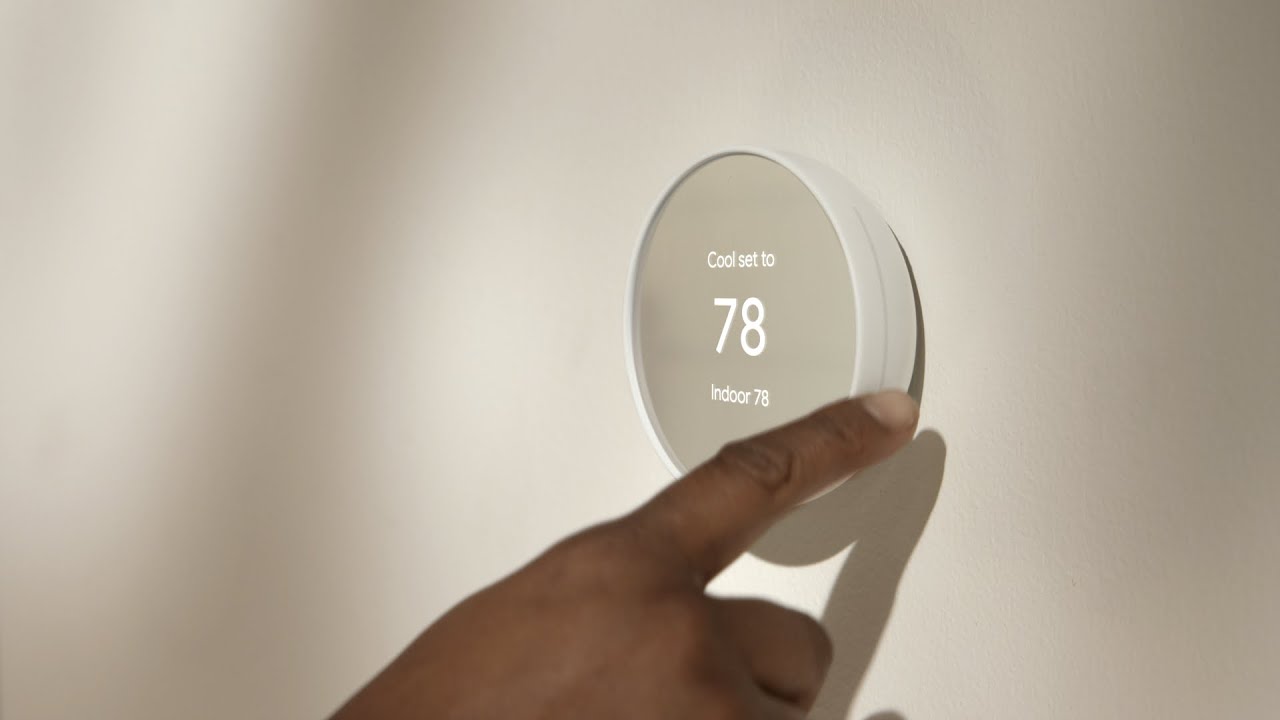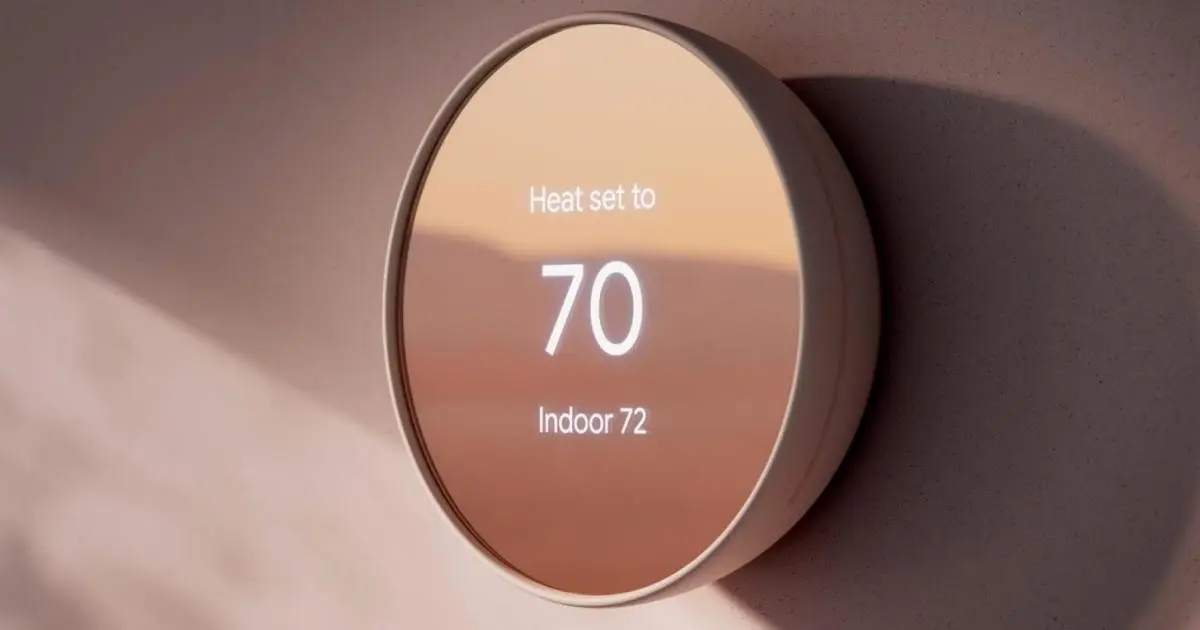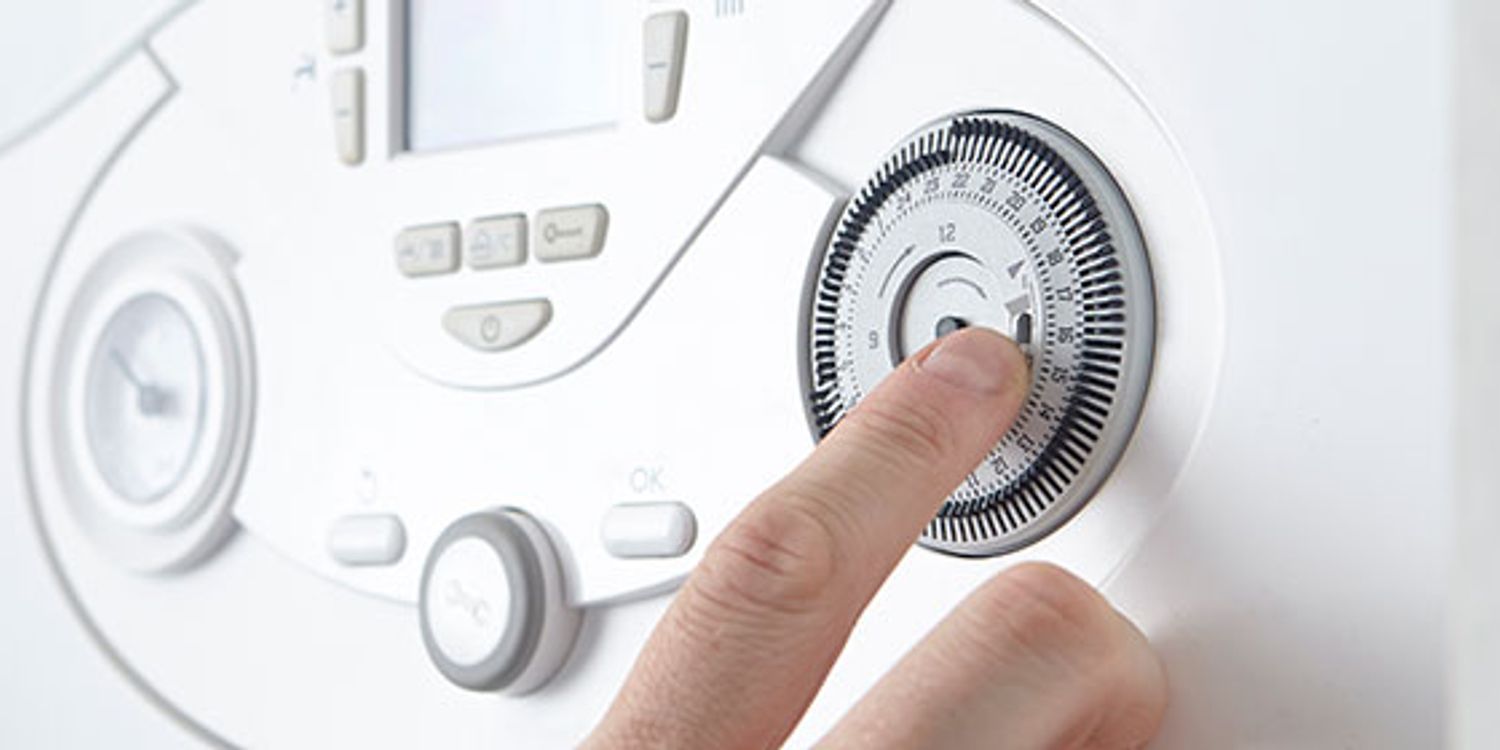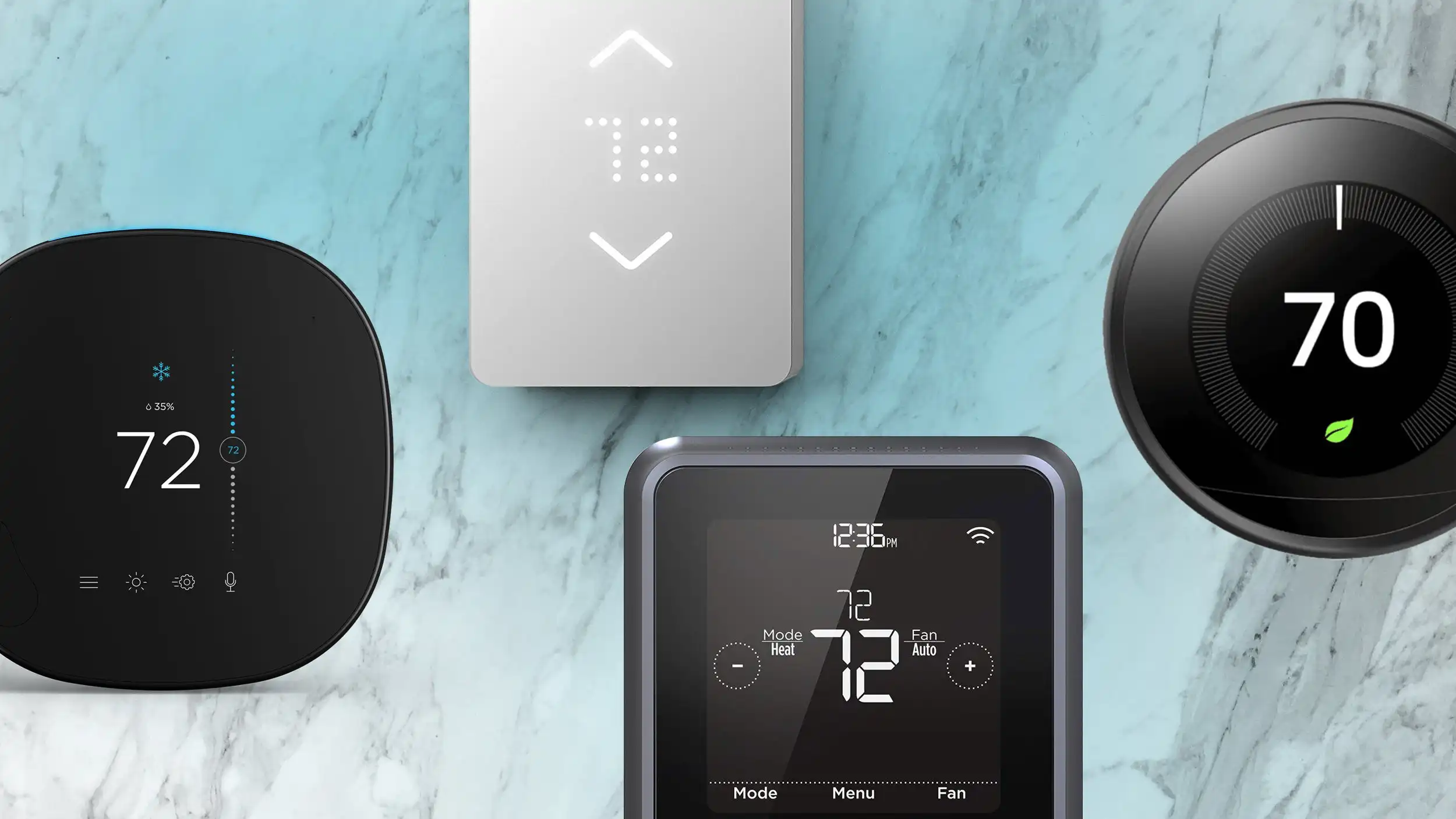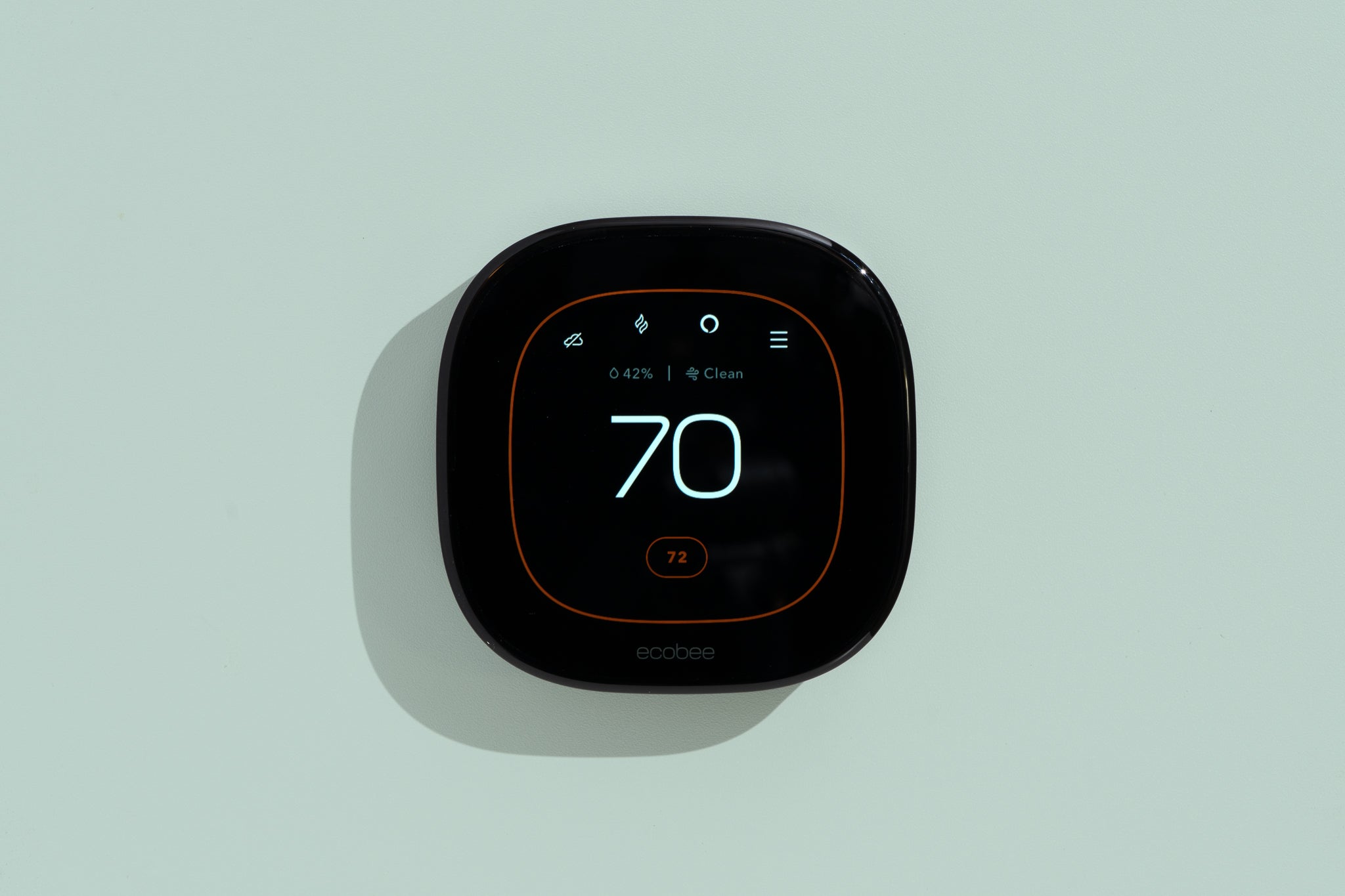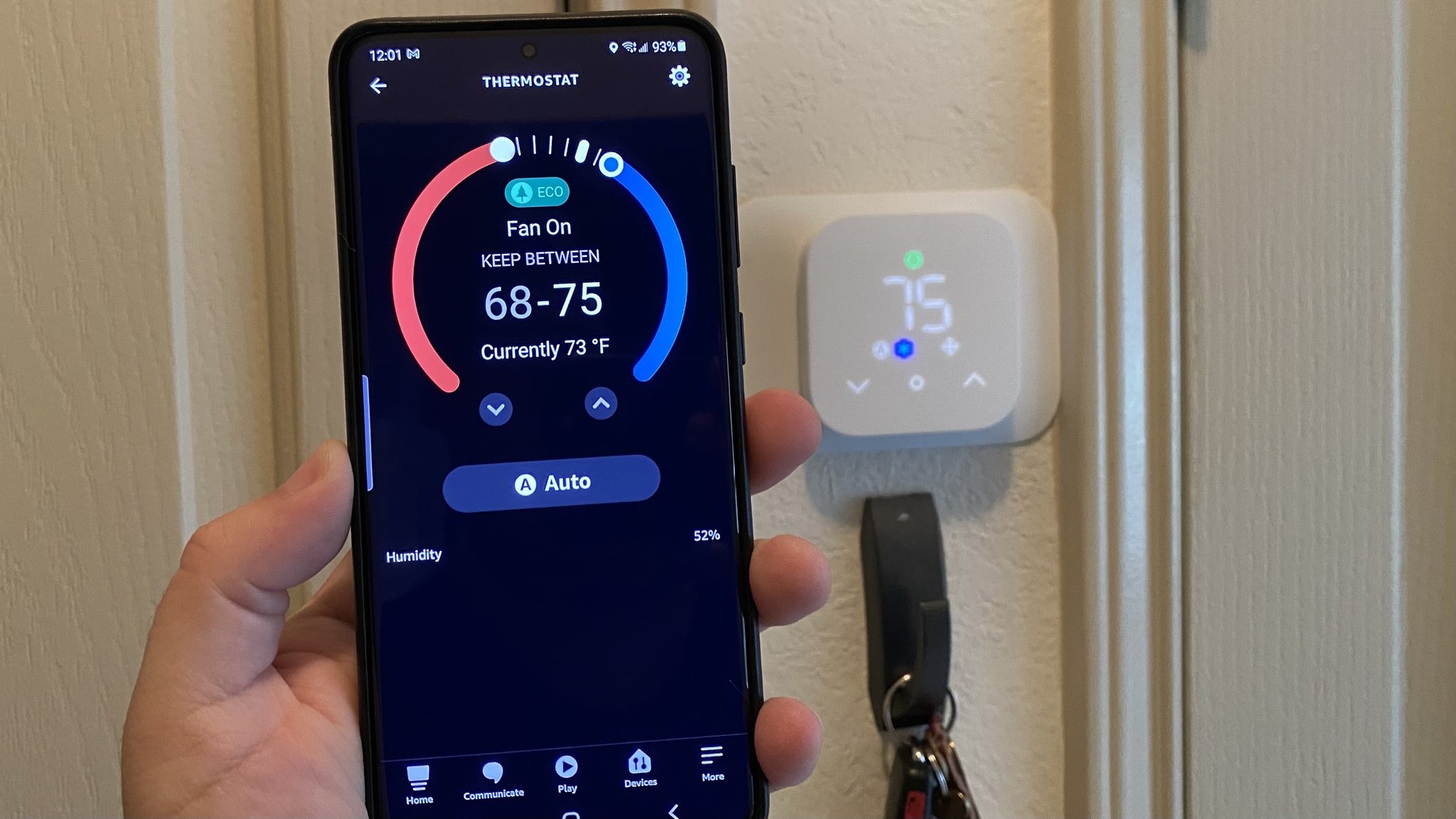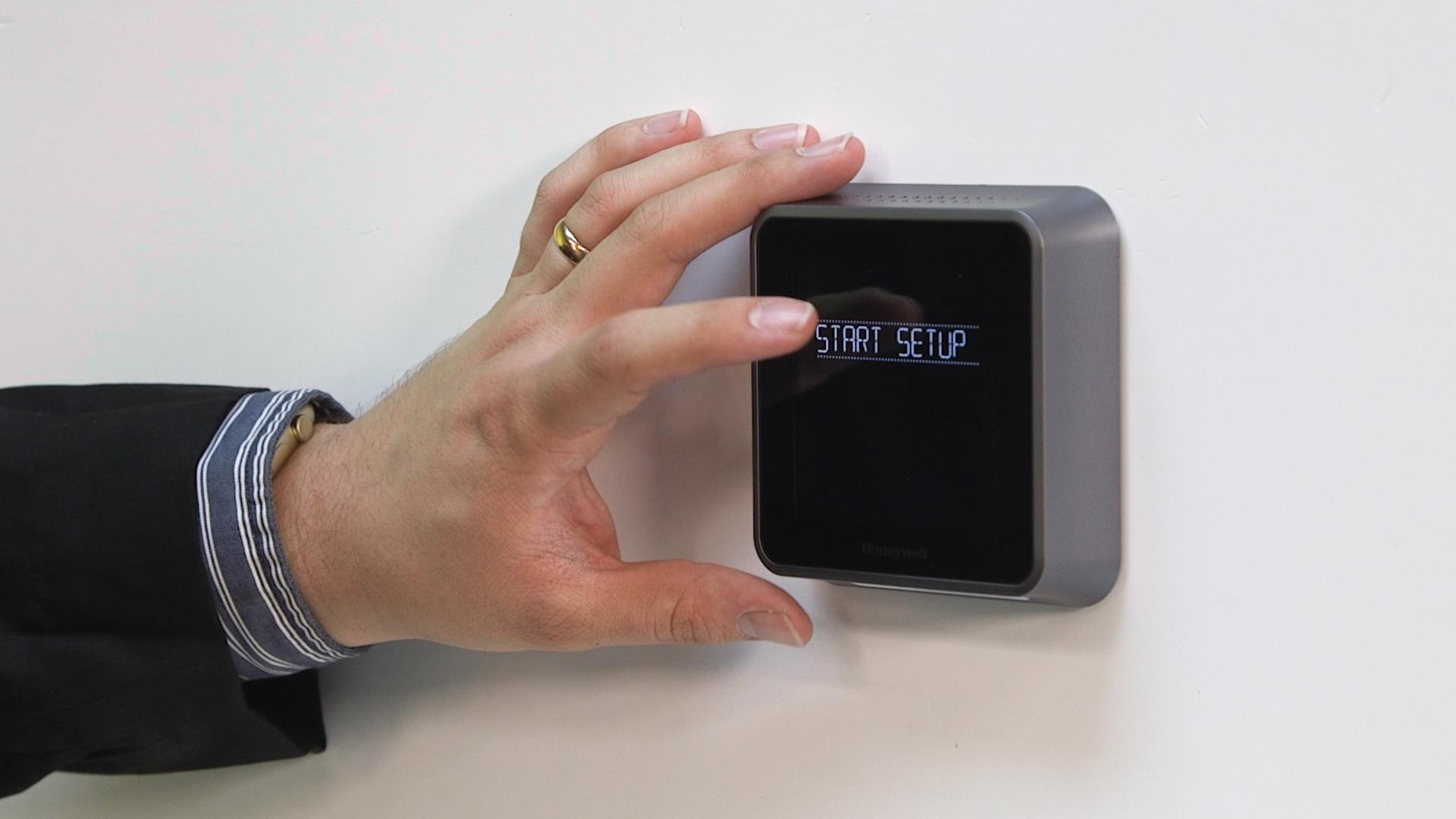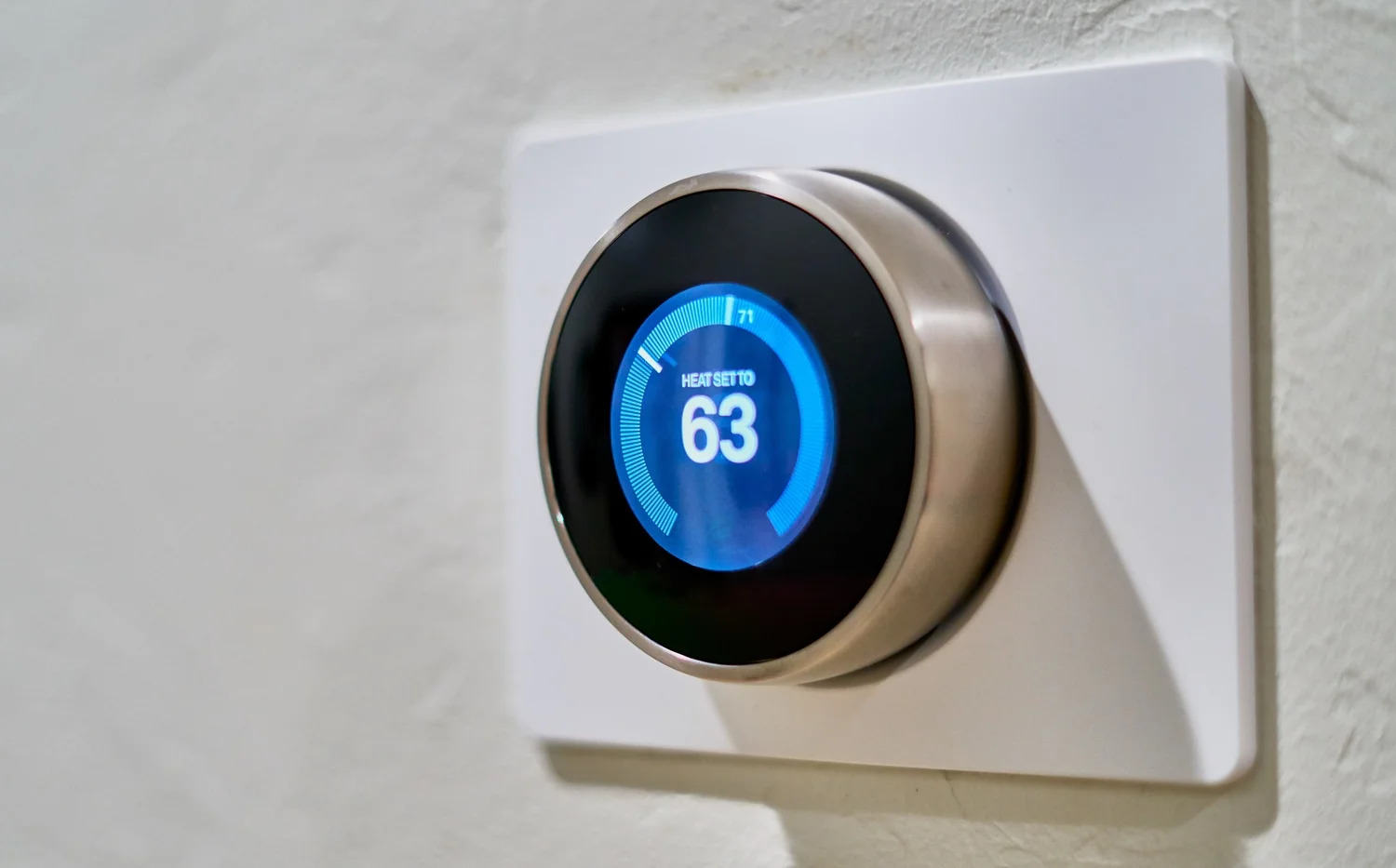Introduction
Welcome to the world of smart thermostats, where comfort meets efficiency. In this guide, we will explore the ins and outs of using a smart thermostat to its fullest potential. Whether you're a tech enthusiast or simply looking to streamline your energy usage, a smart thermostat can revolutionize the way you control your home's temperature.
Gone are the days of manually adjusting the thermostat or returning to a sweltering or chilly home. With a smart thermostat, you can manage the temperature remotely, create personalized schedules, and even receive energy usage reports. This innovative technology not only offers convenience but also helps reduce energy consumption, ultimately leading to cost savings and a smaller environmental footprint.
By the end of this guide, you'll have a comprehensive understanding of how to install, set up, and optimize the use of your smart thermostat. We'll delve into using the accompanying app, programming personalized settings, and troubleshooting common issues that may arise. Whether you're a homeowner, renter, or landlord, the information provided here will empower you to make the most of this cutting-edge home technology.
So, let's embark on this journey to harness the power of smart thermostats and transform the way you interact with your home's climate control system. Get ready to embrace a more efficient and comfortable living environment while contributing to a greener, more sustainable future.
Understanding Smart Thermostats
Before delving into the practical aspects of using a smart thermostat, it’s essential to grasp the fundamental principles behind this innovative device. Unlike traditional thermostats, smart thermostats are equipped with advanced technology that enables remote access, automated scheduling, and energy usage optimization.
Smart thermostats are designed to learn your temperature preferences and daily routines, allowing them to adjust settings automatically for maximum comfort and energy efficiency. By leveraging sensors and Wi-Fi connectivity, these devices can detect when you’re home or away, adapting the temperature accordingly to conserve energy without sacrificing comfort.
One of the key features of smart thermostats is their compatibility with smart home ecosystems, such as Amazon Alexa, Google Assistant, and Apple HomeKit. This integration enables voice control and seamless interaction with other smart devices, creating a cohesive and interconnected home environment.
Furthermore, smart thermostats often provide insightful energy usage reports, empowering users to make informed decisions about their consumption habits. By visualizing energy usage patterns, individuals can identify opportunities to minimize waste and reduce their environmental impact.
Understanding the capabilities of a smart thermostat is the first step toward harnessing its full potential. Whether you’re seeking greater convenience, energy savings, or environmental sustainability, a smart thermostat serves as a cornerstone of modern home automation, offering a myriad of benefits for users of all backgrounds.
Installing a Smart Thermostat
Installing a smart thermostat is a straightforward process that can yield substantial benefits in terms of comfort and energy efficiency. Before you begin, it’s crucial to turn off the power to your HVAC system at the circuit breaker to ensure safety during the installation.
The first step is to remove your existing thermostat from the wall. Once detached, note the placement of the wires and their corresponding labels. This information will be crucial when connecting the wires to your new smart thermostat. Most smart thermostats come with labeled stickers to simplify this process.
Next, you’ll need to mount the new thermostat base onto the wall. Ensure that it is level and securely fastened to prevent any issues with the device’s operation. Once the base is in place, connect the labeled wires to their respective terminals on the thermostat. It’s essential to refer to the manufacturer’s instructions to guarantee the correct wiring configuration.
After the wiring is complete, attach the thermostat display to the base and restore power to your HVAC system. Follow the setup instructions provided by the manufacturer to configure your smart thermostat and connect it to your home Wi-Fi network. This step is crucial for enabling remote access and app-based control of your thermostat.
It’s important to note that while the installation process is relatively simple, some individuals may prefer to enlist the assistance of a professional HVAC technician, especially if they are uncomfortable working with electrical components. Professional installation can provide peace of mind and ensure that the thermostat is integrated seamlessly with your HVAC system.
Once your smart thermostat is successfully installed and connected, you can begin to explore its full range of features, from personalized scheduling to energy usage insights. With the installation complete, you’re one step closer to enjoying a more efficient and convenient approach to home climate control.
Setting Up Your Smart Thermostat
After successfully installing your smart thermostat, the next crucial step is to set it up according to your preferences and household routines. This process involves configuring the thermostat’s settings, connecting it to your Wi-Fi network, and customizing the temperature and schedule to align with your lifestyle.
Begin by following the manufacturer’s instructions to power up your smart thermostat and access the initial setup menu. This typically involves selecting your language, connecting to Wi-Fi, and creating an account with the accompanying mobile app or web interface.
Once your thermostat is connected to Wi-Fi, you can take advantage of remote access and control via the associated app. This allows you to adjust the temperature, create schedules, and monitor energy usage from anywhere using your smartphone or tablet.
Customizing your thermostat’s settings is a critical aspect of the setup process. You can input details such as your preferred temperature range, heating and cooling schedules, and even set up geofencing, which uses your smartphone’s location to adjust the temperature based on whether you’re home or away. These personalized settings ensure that your home remains comfortable while optimizing energy usage throughout the day.
Furthermore, many smart thermostats offer features such as adaptive learning, where the device observes your temperature adjustments over time and automatically creates a schedule that aligns with your habits. This intuitive capability eliminates the need for manual programming and adapts to changes in your routine without requiring constant adjustments.
As you navigate through the setup process, take the time to explore the various settings and features offered by your smart thermostat. Familiarize yourself with the app interface, energy usage reports, and any additional functionalities that can enhance your overall experience.
By setting up your smart thermostat to reflect your specific needs and preferences, you’re laying the foundation for a more efficient and personalized approach to home climate control. With the initial setup complete, you’re poised to enjoy the convenience and energy-saving benefits that come with smart thermostat technology.
Using the Smart Thermostat App
The smart thermostat app serves as a gateway to effortless temperature control and energy management, offering a user-friendly interface that puts the power of climate control at your fingertips. Whether you’re at home, at work, or on the go, the app provides convenient access to your thermostat’s settings and real-time status.
Upon opening the app, you’ll typically encounter a dashboard that displays the current temperature, humidity levels, and the status of your HVAC system. From this central hub, you can easily adjust the temperature, switch between heating and cooling modes, and set up custom schedules tailored to your daily routine.
One of the most compelling features of the smart thermostat app is its remote access capability. This allows you to monitor and adjust your home’s temperature from anywhere with an internet connection, providing unparalleled convenience and flexibility. Whether you’re returning home earlier than expected or planning to extend your time away, the app empowers you to maintain optimal comfort while minimizing energy waste.
Many smart thermostat apps offer additional functionalities, such as energy reports that provide insights into your HVAC system’s usage patterns. These reports can help you identify opportunities to optimize energy consumption and make informed decisions to reduce your environmental impact.
Furthermore, some apps integrate with smart home ecosystems, enabling seamless interaction with other connected devices. This integration opens up possibilities for voice-controlled temperature adjustments, automation based on specific triggers, and the creation of personalized routines that enhance your overall living experience.
As you navigate through the app’s interface, take the time to explore its various features and settings. Familiarize yourself with the process of creating and modifying schedules, adjusting temperature presets, and accessing energy usage data. The more comfortable you become with the app, the more effectively you can leverage its capabilities to optimize your home’s climate control.
By utilizing the smart thermostat app to its full potential, you can enjoy a heightened level of control over your home’s temperature and energy usage. Whether you’re aiming to maximize comfort, minimize energy costs, or reduce your environmental footprint, the app serves as a valuable tool in achieving your goals.
Programming Your Smart Thermostat
Programming your smart thermostat is a pivotal step in maximizing its efficiency and tailoring it to your lifestyle. By creating personalized schedules, you can ensure that your home maintains comfortable temperatures while optimizing energy usage based on your daily routines and preferences.
Begin by considering your typical weekly schedule, including waking up, leaving for work, returning home, and bedtime. Most smart thermostats offer the flexibility to set different temperature targets for various times of the day, allowing you to conserve energy when the home is unoccupied and prioritize comfort during active hours.
When programming your thermostat, take advantage of features such as geofencing, which utilizes your smartphone’s location to automatically adjust the temperature as you come and go. This hands-free approach ensures that your home is consistently comfortable when occupied and energy-efficient when vacant, without the need for manual intervention.
Additionally, some smart thermostats offer adaptive learning capabilities, where the device observes your temperature adjustments over time and creates a customized schedule that aligns with your habits. This intelligent feature eliminates the need for extensive manual programming, as the thermostat adapts to your routine and preferences organically.
Consider seasonal variations in your programming as well. As the weather changes, your heating and cooling needs will evolve, and adjusting your thermostat’s schedule to accommodate these shifts can lead to significant energy savings. Many smart thermostats offer seasonal scheduling features to simplify this process and ensure that your home remains comfortable year-round.
Regularly reviewing and fine-tuning your thermostat’s programming is essential to maintaining optimal energy efficiency. As your routines change or special circumstances arise, such as vacations or holidays, adjusting your thermostat’s schedule accordingly can prevent unnecessary energy consumption and ensure that your home is always comfortable upon your return.
By actively programming your smart thermostat to align with your lifestyle and seasonal variations, you can enjoy the perfect balance of comfort and energy efficiency. With a well-crafted schedule in place, your smart thermostat becomes a proactive partner in managing your home’s climate control, ultimately leading to cost savings and a reduced environmental impact.
Maximizing Energy Savings
Maximizing energy savings with a smart thermostat involves leveraging its advanced features and implementing strategic practices to minimize energy consumption without sacrificing comfort. By adopting a proactive approach to energy management, you can reduce your environmental footprint and lower your utility costs while enjoying a comfortable living environment.
One of the primary methods for maximizing energy savings is to take full advantage of your smart thermostat’s scheduling capabilities. By programming personalized schedules that align with your daily routines, you can optimize your HVAC system’s operation, reducing energy usage during periods of inactivity or when the home is unoccupied.
Utilizing geofencing technology is another effective way to conserve energy. By enabling geofencing on your smart thermostat, it can detect when you leave home and automatically adjust the temperature to conserve energy. When you’re on your way back, the thermostat can pre-condition your home to ensure comfort upon your arrival, all while minimizing energy waste.
Smart thermostats often offer energy usage reports that provide valuable insights into your HVAC system’s performance and consumption patterns. By reviewing these reports, you can identify opportunities to optimize energy usage, such as adjusting temperature settings, fine-tuning schedules, and addressing any inefficiencies in your home’s heating and cooling systems.
Another effective strategy for maximizing energy savings is to leverage the adaptive learning capabilities of your smart thermostat. Over time, the device can learn your temperature preferences and daily routines, automatically adjusting settings to minimize energy consumption while maintaining comfort. This intuitive approach eliminates the need for constant manual adjustments and ensures that your home operates efficiently based on your habits.
Furthermore, integrating your smart thermostat with other smart home devices, such as smart lighting and occupancy sensors, can enhance energy-saving efforts. By creating cohesive automation routines, you can synchronize the operation of various systems to minimize energy waste and create a more sustainable living environment.
Regularly updating your smart thermostat’s software ensures that you have access to the latest features and optimizations, further enhancing its energy-saving potential. Manufacturers often release firmware updates that improve efficiency, performance, and compatibility with other smart home devices, contributing to long-term energy savings.
By implementing these strategies and embracing the capabilities of your smart thermostat, you can maximize energy savings without compromising comfort. This proactive approach not only reduces your environmental impact but also leads to tangible cost savings on your energy bills, making your investment in a smart thermostat even more rewarding.
Troubleshooting Common Issues
While smart thermostats offer advanced functionality and convenience, occasional issues may arise that impact their performance. Understanding common problems and their solutions can help ensure that your smart thermostat operates smoothly, providing reliable climate control and energy management.
One common issue encountered with smart thermostats is connectivity problems. If your thermostat is unable to connect to your Wi-Fi network or loses connection intermittently, consider rebooting your router and ensuring that the thermostat is within range of a stable Wi-Fi signal. Additionally, checking for firmware updates and ensuring that your Wi-Fi network is operating optimally can resolve many connectivity issues.
Inaccurate temperature readings can also be a concern. If you notice discrepancies between the displayed temperature and the actual conditions in your home, recalibrating the thermostat or relocating it to a more suitable position can help improve accuracy. Avoid placing the thermostat near drafty areas, direct sunlight, or sources of heat or cold that may affect its temperature readings.
If your smart thermostat is unresponsive or fails to operate as expected, performing a reset or reboot can often resolve the issue. Refer to the manufacturer’s instructions for the specific reset procedure, which may involve pressing a combination of buttons or accessing the settings menu to initiate a reset. After the reset, reconfigure your thermostat settings and ensure that it reconnects to your Wi-Fi network.
Battery-related issues are another common occurrence. If your smart thermostat is battery-powered and experiences frequent battery drain, consider replacing the batteries with high-quality, long-lasting alternatives. Additionally, ensuring that the battery contacts are clean and free of corrosion can prevent power-related issues.
Compatibility issues with your HVAC system can also affect the performance of your smart thermostat. If you experience issues with heating or cooling, verify that your thermostat is compatible with your HVAC equipment and that the wiring is correctly configured. Consulting a professional HVAC technician can provide valuable insights and solutions for compatibility-related challenges.
Regularly updating your smart thermostat’s firmware is essential for resolving software-related issues and ensuring optimal performance. Manufacturers often release updates to address bugs, enhance features, and improve compatibility with other devices. Staying up to date with firmware updates can prevent and resolve many common issues.
By familiarizing yourself with these common troubleshooting steps and proactively addressing any issues that arise, you can maintain the seamless operation of your smart thermostat. A well-maintained and properly functioning thermostat ensures that you continue to enjoy the comfort, convenience, and energy-saving benefits that this innovative technology offers.
Conclusion
As we conclude our exploration of smart thermostats, it’s evident that these innovative devices have revolutionized the way we interact with home climate control. From installation and setup to programming and troubleshooting, the journey of integrating a smart thermostat into your home has the potential to enhance comfort, improve energy efficiency, and contribute to a more sustainable lifestyle.
By embracing the capabilities of smart thermostats, homeowners and renters alike can take proactive steps toward minimizing energy consumption and reducing their environmental impact. The ability to create personalized schedules, leverage remote access, and receive insightful energy usage reports empowers individuals to make informed decisions about their energy usage, ultimately leading to cost savings and a greener footprint.
Furthermore, the seamless integration of smart thermostats with smart home ecosystems and voice assistants opens up a world of possibilities for creating interconnected, automated living environments. This convergence of technology not only enhances convenience but also streamlines energy management, creating a harmonious balance between comfort and sustainability.
As the smart home revolution continues to evolve, smart thermostats stand out as a cornerstone of modern energy-efficient living. Their adaptive learning capabilities, geofencing features, and compatibility with other smart devices position them as essential tools for those seeking to optimize their living spaces and reduce their carbon footprint.
In conclusion, the journey of utilizing a smart thermostat transcends mere temperature control; it represents a conscious choice to embrace a more efficient and sustainable way of living. By harnessing the power of smart thermostats, individuals can embark on a path toward a greener, more comfortable future, where technology and environmental stewardship converge to create homes that are both intelligent and eco-friendly.







